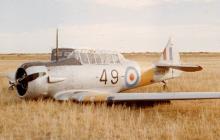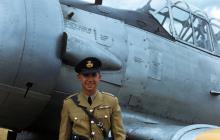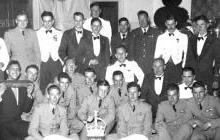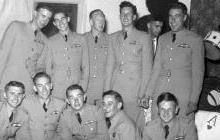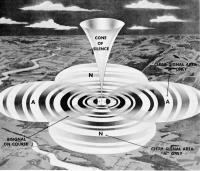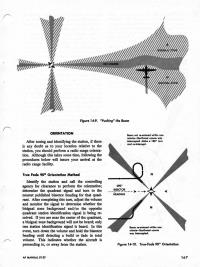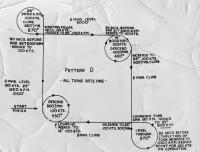Learning the "Right Stuff"
|
|
The year is 1957, the month January and my training begins as a pilot in the Royal New Zealand Air Force - the RNZAF. If I can show that I have the right stuff, I hope to graduate in December with the rank of Pilot Officer and wearing the coveted pilot brevet on the left breast of my officer's uniform. Then, I'll be a fully qualified instrument rated, aerobatic, close formation, air gunnery and bombing military pilot. A hotshot aviator with a total flight time of 200 hours, all flown in the WW2 trainer, the North American Harvard, Mark 2A. Was the training that easy that a simple country boy like me could handle it? Far from the truth: I look back on that year as the most difficult physical, academic and psychological challenge that I've ever faced, certainly not before, and never since. Everything following that first year of struggle to survive and succeed in the great game of aviation became relatively easy. Like my successful classmates, I'd transformed into a highly self confident individual, imbued with the knowledge that I could now achieve the impossible ... or something like that! We, the graduates, had every reason to feel somewhat immortal. We were the survivors of a slow but steady attrition of our original group during the eleven months of training. In fact, the decimation had begun during the RNZAF's initial selection process, months before we entered the training program. Many were called, few were chosen and even fewer graduated. Of course, the ones' who were chosen had to be perfect physical specimens with a crooked smile, straight teeth, handsome and charming. Some years later, as an Instructor Pilot in the same training program, I did my best to convey to students, from my own experience, what were the reasons for success or failure. My simple take was to be at least average in the three disciplines: military officer qualities, academic and flying ability. A good "all rounder" ... no advantage in being an academic genius if you couldn't fly for crap, or didn't know your left leg from the right on parade! So how good were we, the immortals who'd survived? Didn't take long to find out from our peers, those who'd preceded us by only a year or two. When we showed up at our first operational conversion training units at RNZAF Base Ohakea in early 1958, we were referred to as "bog-rats" and told not to consider ourselves real pilots! What was the Harvard like to fly, what could we do with it and how good a basic trainer was it? In retrospect, I was fortunate to join the RNZAF as a student pilot in the dying days of that vast knowledge learnt by thousands of allied aviators during WW2. The British Commonwealth Harvard, the USAF's Texan T-6 and the USN's SNJ quickly and effectively prepared them for combat roles in Hurricanes, Spitfires, Typhoons, Tempests and Mustangs etc ... like the Harvard all tail-draggers with large propellers producing high torque, prop wash and precession, particularly during take off. In 1957, No 1 Flying Training School and it’s big brother, the Central Flying School (CFS) of the RNZAF, still embodied the very best of that WW2 training of pilots using the Harvard to teach all military flying skills from ab Initio through to advanced - including instrument flying, aerobatics, air combat techniques, air gunnery and bombing. It made a lot of noise, inside and out, the cockpit cold in winter, hot in summer, smelling of burnt gasoline and oil. With no previous flying experience it was difficult to handle this comparative monster of an airplane. This was no puddle-jumping, bug-smashing little tinker toy Cessna trainer, as used in the general aviation world, but rather a thoroughbred beast that needed a strong and steady hand. Learning to fly the Harvard well, took time and perseverance. But with experience in the airplane, it became fun to fly. Possibly the steepest learning curve was instrument flight training. The flight instruments were WW2 vintage and the only radio navigation aid was a small AM (200-550 kHz) radio receiver for the purpose of hearing the Morse code signals (A's & N's) from Radio Range ground based arrays. Other exciting maneuvers purely flown on instruments were Pattern Dogs and recovery from spinning using limited panel (gyros were caged for aerobatics!)
|

|
Riding the Range - Radio that is!Possibly one of my last aural Radio Range approaches that I recall, before the aerial arrays were torn down and dumped on the trash heap of NZ Aviation history, was over Christchurch in the winter of 1959. I was in a Harvard with Bill Cranfield ... he in the front seat and me under the hood in the back, attempting my best to hear the A’s & N’s and stay on the inbound leg to the Cone of Silence.
|
Back to Top

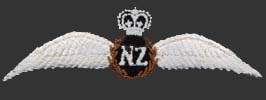


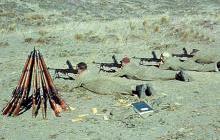
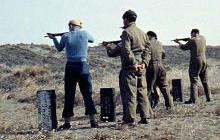
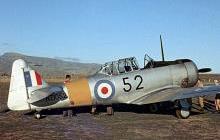

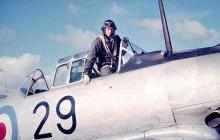
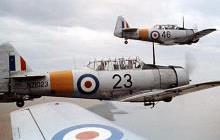
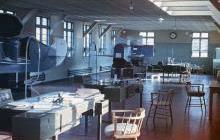
![Whoops! Somebody just did a wheels up landing at Birdlings Flat. Note the wing gun [.303]](images/Large%20Images/57wigram76_thumb.jpg)
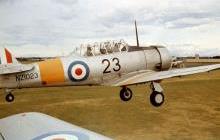
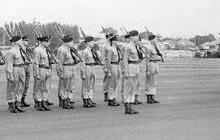
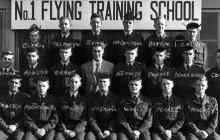
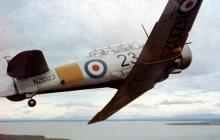

![Loading practice bombs [smoke] onto Harvard](images/Large%20Images/57wigram75_thumb.jpg)
